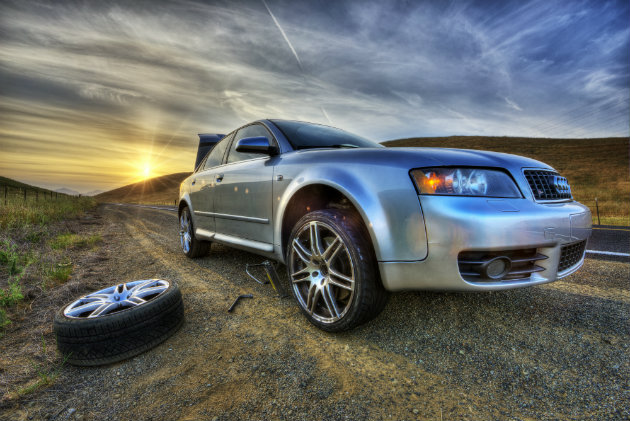Runflat tyres – reassurance out on the road
There is no good time to get a flat tyre. But here's a way of dealing with it.

Whenever and wherever you get a flat tyre, it’s never convenient.
You can be stranded somewhere strange, waste lots of time while waiting for the roadside recovery or make yourself dirty while trying to mount a spare.
Things are worse if you haven’t got a spare or simply have no idea how that tyre repair kit is used.
Runflat tyres are said to solve the issue once and for all. The tech novelty that was first used on sports cars is becoming more available on other cars (for example, BMW sedans). Is this solution for you? While nearly 12% of new vehicles leave their factories on tyres with the runflat technology (according to data provided by Edmonds), ‘runflats’ still have trade-offs you should know in order to make an informed purchase. Let’s look at their pros and cons.

Runflat tyres could give added confidence when driving in remote areas
What are runflat tyres for?
The runflat technology prevents a punctured tyre from suddenly losing its pressure (which is what happens in regular tyres).
This enables a runflat tyre to support the weight of the car for the time needed to get to the nearest repair shop (the figure depends on the manufacturer, but on average, it is 50 miles at the reduced speed of 56 mph). The self-supporting tyre is the most popular type of a runflat tyre, which has heavily reinforced sidewalls that are able to support the vehicle even if the tyre is completely out of air.
Benefits of runflat tyres
- You can continue your trip after getting a puncture and just stop at the nearest tyre repair shop. Some flat tyre manufacturers claim that their tyres provide up to 100 miles of driving after the complete pressure loss. This benefit means comfort: you don’t have to get out of your car if the weather is inclement, dirty yourself while fitting the spare and eventually arrive late.
- Your vehicle gets lighter. As you don’t have to bring the spare and tools needed for the tyre change, you save some space in your vehicle and lower its weight. But not too much. Keep in mind that runflat tyres are slightly heavier than regular ones.
- Runflat tyres are safer. As there is no sudden pressure loss, which usually results in vehicle destabilisation, you can enjoy normal handling after the tyre damage happens.
 Trade-offs of runflat tyres
Trade-offs of runflat tyres
- Technology doesn’t work for all. Only cars specially designed for runflat technology (newer ones) can use runflat tyres.
- You have no spare. For cars with runflat tyres, no spare tyre is provided and there are no tools for tyre changes. So you won’t have the reassurance of a spare.
- Ride is harder. Stiffer sidewalls that help support the weight of the vehicle translate into a much harsher drive. Some car manufacturers adjust the suspension to address this issue.
- They wear out faster. To deal with the hard drive, car manufacturers use softer tyre compound which wears out approximately 6k miles sooner.
- Pressure loss can go unnoticed. Stiff sidewalls do not show signs of low pressure, so it’s difficult to spot the issue immediately unless your tyre pressure monitoring system tells you.
- You aren’t secured against blowouts 100%. If you don’t notice the pressure loss (see the point above) and continue to drive beyond the recommended mileage or speed, the damaged tyre disintegrates and causes a blowout, with all the possible destabilising consequences.
- High price. A runflat tyre is approximately 40% more expensive than its standard tyre equivalent.
- Runflat tyres aren’t big sellers and so they are hard to source.

 Trade-offs of runflat tyres
Trade-offs of runflat tyres





